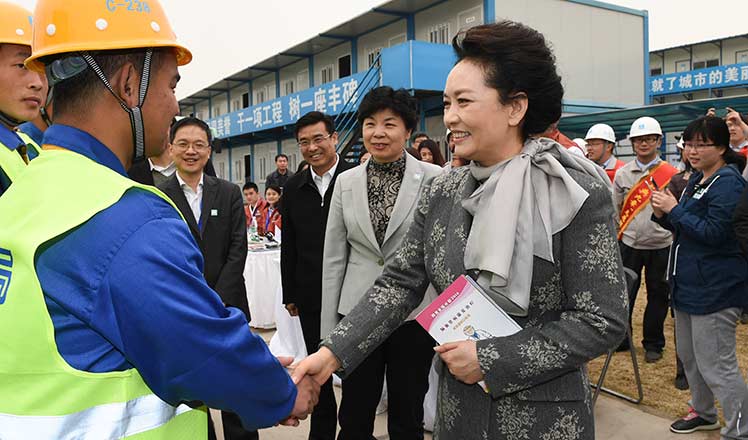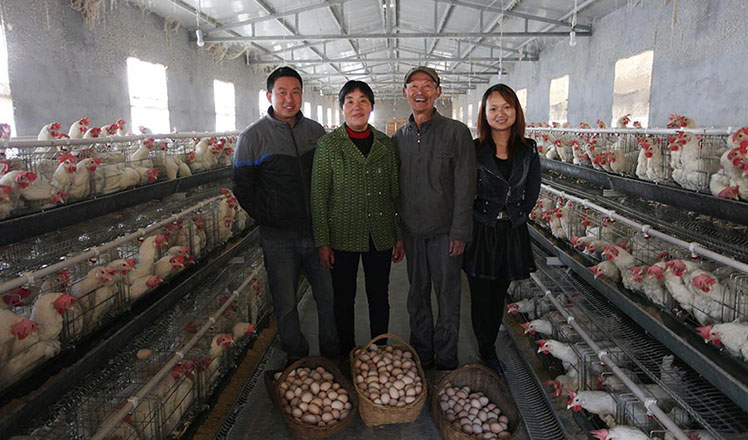China's new normal: greater opportunity in slower growth
Updated: 2016-03-26 21:52
(Xinhua)
|
||||||||
BEIJING -- While analysts quibble over whether China's economy will make a soft or hard landing, global entrepreneurs remain upbeat.
The pace may be slower and the course bumpier, consumption is still staggering but there will be opportunities aplenty in China's new, sustainable regime.
"We are very optimistic about China's economy. We are long-term players, we don't look at short-term hiccups," said Yousef Abdullah Al-Benyan of Saudi Arabia's SABIC, one of the world's largest chemical companies.
Along with surmountable difficulties, the slowdown also means opportunities. Companies must reshape themselves to bring new products to customers, Al-Benyan told this week's Boao Forum for Asia (BFA) in south China.
It is this same logic that is driving Caterpillar, the world's largest construction and mining equipment maker. Although global sales and revenues slumped 15 percent in 2015, partly due to weak growth in China and low commodity prices, the US company remains committed to the Chinese market.
"China is an integral part of Caterpillar's long-term global strategy and we are investing accordingly," said Douglas Oberhelman, chairman and CEO of Caterpillar.
The Chinese government is calling for a higher level of technology and innovation, industrial upgrading and environmental protection, which will bring more opportunities to the industries Caterpillar serves, Oberhelman said.
SABIC and Caterpillar are definitely not alone in betting on China. Looking beyond the headline GDP number, it is easy to see why they are so confident.
Although China's growth rate fell below the 7-percent level for the first time in 25 years, spending of the 1.3 billion consumers still grew at a double digit pace.
Last year's consumer spending topped 30 trillion yuan ($4.6 trillion), a huge number by any standard and making the market an irresistible prospect for any overseas manufacturer.
Rising incomes, improving social security network and a new generation of freer-spending consumers will continue to underpin China's consumer boom in the coming years.
According to forecasts made by Boston Consulting Group, China's consumer economy may expand to $6.5 trillion by 2020 - even if annual real GDP growth cools to 5.5 percent, below the official target. The incremental growth alone over the next five years would be comparable to "adding a consumer market 1.3 times larger than that of today's Germany or UK," it said in a report early this year.
Other than consumer products, services like health care, education and entertainment are seen as high-growth spots.
At the BFA, Premier Li Keqiang assured global investors that "there are more hopes than difficulties," and China has enough policy tools to keep the economy stable.
The country's pro-growth policies have yet to spur a rebound in the economy, but macro economic data showed stabilization.
Although trade still plummeted and manufacturing remained weak, other indicators for the first two months of the year, including investment, property sales, fiscal revenue and power consumption, suggested improvement in the economy.
According to a Thomson Reuters/INSEAD survey released this week, sentiment at some of the biggest companies across Asia brightened in the first quarter of 2016, rising from a four-year low registered three months prior, as executives bet on economic improvement in China.
"People are digesting the economic slowdown in China and are being more optimistic and looking for opportunities rather than being alarmist," Reuters cited Singapore-based economics professor Antonio Fatas at global business school INSEAD as saying.

 First lady Peng Liyuan leads fight against tuberculosis
First lady Peng Liyuan leads fight against tuberculosis
 Faces at Boao Forum for Asia Annual Conference
Faces at Boao Forum for Asia Annual Conference
 In photos: Lunar eclipses visible in eastern China
In photos: Lunar eclipses visible in eastern China
 Chinese chasing Spring blossoms around the country
Chinese chasing Spring blossoms around the country
 Migrant couple returns to hometown to raise chickens
Migrant couple returns to hometown to raise chickens
 Victims of Brussels attacks commemorated
Victims of Brussels attacks commemorated
 In photos: Brussels rocked by multiple explosions
In photos: Brussels rocked by multiple explosions
 Raul Castro and Obama hold talks in Havana
Raul Castro and Obama hold talks in Havana
Most Viewed
Editor's Picks

|

|

|

|

|

|
Today's Top News
Marriott unlikely to top Anbang offer for Starwood: Observers
Chinese biopharma debuts on Nasdaq
What ends Jeb Bush's White House hopes
Investigation for Nicolas's campaign
Will US-ASEAN meeting be good for region?
Accentuate the positive in Sino-US relations
Dangerous games on peninsula will have no winner
National Art Museum showing 400 puppets in new exhibition
US Weekly

|

|







